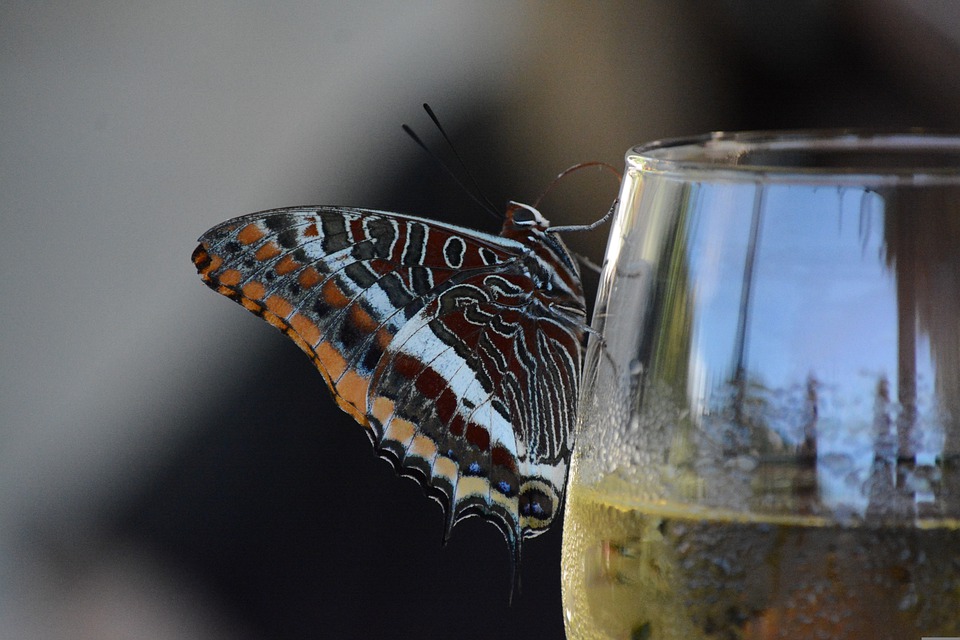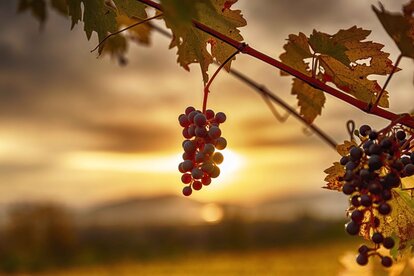INDUSTRY
Arab wines: Oasis of freedom

They are the fruit of the Coptic Christian or Jewish tradition, of the customs imported from the colonizing countries, especially France, of the demands of tourists or of the courageous entrepreneurship of a handful of businessmen. Wine in the Arab countries of the Mediterranean arc is an inherent part of their culture, uses and customs.
Neither the very high taxation they must bear, nor the bureaucratic obstacles that the national authorities weave when planting vineyards or starting up a winery, nor the consumption limited to a minority of bars and restaurants, nor even the violence unleashed, in a few cases, against the estates and the cultivation have served to stop a product that is, above all and above all, Mediterranean essence and oasis of freedom.
Algeria, which became the world's fifth largest producer in 1935 with 400,000 hectares and 18 million hectoliters, supplying France and other European countries, continues to be the leader with 70,000 hectares and 57.4 million liters. Seven Appellations of Origin, such as Les Côteaux de Tlemcen, give an idea of the importance of the sector. Varieties of French origin have adapted to its geography and tastes: Carignan, Cinsault, Grenache, Alicante Bouschet, Cabernet Sauvignon or Pinot Noir are some of the most common varieties.
Grands Crus de L'Ouest, from the entrepreneur Rachid Hamamouche, is one of the great Algerian jewels with vines, fruit of French colonization, more than 60 years old. The good work of Anissa Djani, an oenologist trained in Bordeaux, is a clear sign of identity in her famous Cuvée de Tlemcen.
Morocco is a land of great wines and much of its success lies in Le Celliers de Mèknes, in the city of Meknes, which accounts for almost 85% of the country's production. Created in 1964 by Brahimi Zniber, the estate extends over 2,400 hectares in an area born for the cultivation of vines and olives.
The Côteaux de l'Atlas appellation, the only one in the country, produces wines with varieties such as Merlot, Cabernet Sauvignon and Syrah and an excellent carbonic maceration wine such as Beauvallon, made with Carignan and original aromas of incense and sandalwood.

Wine celebrities
Great winemakers such as Alain Graillot, alma mater of Croze Hermitage in France, triumph with his Tandem, a wine made from 100% Syrah near Meknes, or celebrities such as Gérard Depardieu, in the winery that bears his name in Guerrouane and produces an excellent Grenache wine called Lumière.
Large groups such as the French Castel, with a thousand hectares in Meknes to produce Domaine Sahari, with Carignan, Syrah and Grenache, are also spread throughout the country. Or the Thalvin company, which dates back to 1927, and has 250 hectares of property and 800 more with grapes acquired from small winegrowers, south of Rabat.
In Tunisia, Les Vignerons de Carthague, a winery born in 1948 from the union of 9 cooperatives, is one of the great symbols of the region. It took off 15-20 years ago thanks to Belgacem D'Khili, a Montpellier-trained winemaker, with wines under the Mornag appellation.
Domaine Shadrapa, from the French group Castel, counts on the Spanish oenologist Pilar Rodrigo, trained in Requena (Valencia), as one of its great assets. They have 250 hectares in Medjerde and since 2004, the year in which it was launched, it offers its wines in the restaurants of the Port of Tunis and recreational places. Seventy percent of Tunisian wines, 14,000 hectares producing 3.5 million liters, are drunk in Tunisia and are linked to tourism.
Domaine Neferis dates back to 1893 and has 220 hectares of varieties such as Chardonnay, Viognier and Pedro Ximénez in whites and Carignan and Syrah in reds or Domaine Kurubis, with 22 hectares in the Mornag appellation, with varieties such as Syrah, Merlot or Monastrell or whites such as Chardonnay and Muscat.

In a place of great historical significance as the Bekaa Valley are born the best wines of Lebanon, 10 million bottles produced by fifty wineries with the productive leadership of this region that covers 90% of national production, Château Musar leads the high quality of the wines made in the country and are also known Château Kefraya or Château Ksane. Varieties such as Cabernet Sauvignon, Merlot, Cinsault, Carignan or Grenache coexist with native grapes such as the white grapes Obaideh and Merwah.
Copts and Jews lead the way in winemaking in Egypt with a large winery such as Domaine de Gianaclis that spreads over 170 hectares north of Cairo and makes wines named after Omar Khayyan, a mathematician and wine poet born in northern Iran in the 11th century. Chez Kouroum, which dates to 1930, produces 2 million liters, including the use of the indigenous Bannati variety.
In Syria, Domaine de Bagylus stands out, launched in 2006 by brothers Karim and Sandro Saadé, with 20 hectares at an altitude of 900 meters. Jordan has only two wineries: Omar Zumot's, with its Saint George wine, and Haddad with Mount Nebo. And Palestine, with more than a dozen wineries, has Cremisan Winery, founded by the Salesians in 1885, and Nadim Khoury, who opened a brewery and then a winery in Taybeh. The country offers 21 indigenous varieties. Wines all with Mediterranean aromas.
